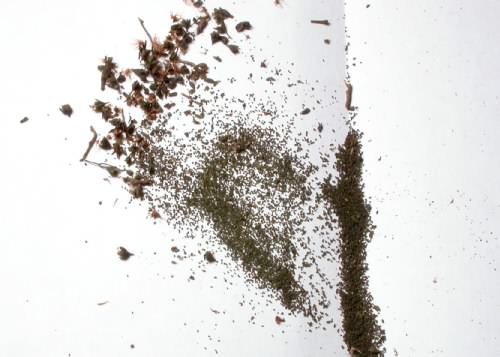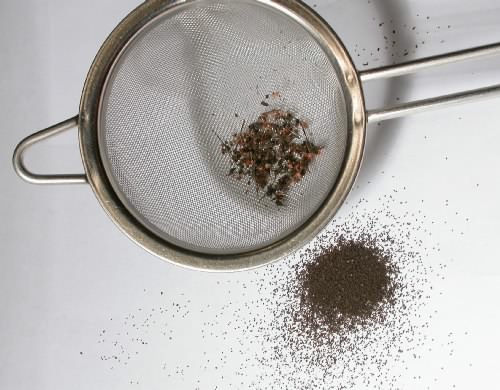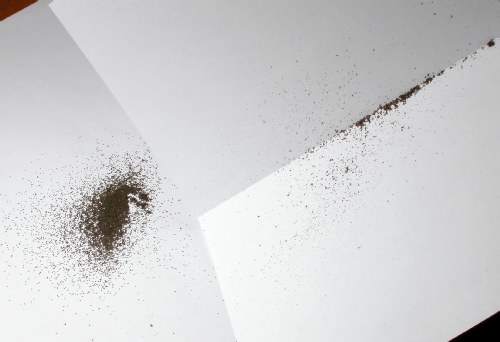It is very important that seeds donated to the Seed Bank be clean of extraneous plant matter. The Seed Bank can't ship seeds internationally if they are not clean. In addition, the extraneous matter can cause problems for the member who receives the packets. The remains of the stems, seed pods, and aborted seeds are sources of mold when starting seeds.
The following photos show how to clean seed of most plants. Fluffy seeds like those of Darlingtonia and Cephalotusare a little trickier but can be cleaned with care. With wind dispersed seeds like Nepenthes seed all you can do is carefully pick out the large material. Try to not get the seed pod material mixed in with the collected seeds in first place.

The lowest tech way of cleaning seeds is to place them on a piece of white paper and use a finger to separate the larger material from the seeds. This isn't optimal but it works to a large extent.
Note it also helps if the paper is creased to help pour the seeds into an envelope for storage or distributing into packets.

A better way to separate the chaff from the seeds is to use kitchen sieves. You can use a series of different mesh sizes to get clean seed.
These are Drosera capillaris seeds. They are too fine to be caught in a sieve so all you can do with a sieve is separate the larger material. With Sarracenia seeds you can use a large mesh sieve that passes the seeds to separate the large material then a sieve like the one shown here that catches the seeds and passes aborted seeds and extraneous material.

To separate aborted seeds and very fine debris from seeds that roll you can use a second piece of paper. The debris tends to stick to the paper and the seeds will roll off onto a second piece of paper.
The seeds may be stored in an envelope you can make or be packeted now that they are clean.
